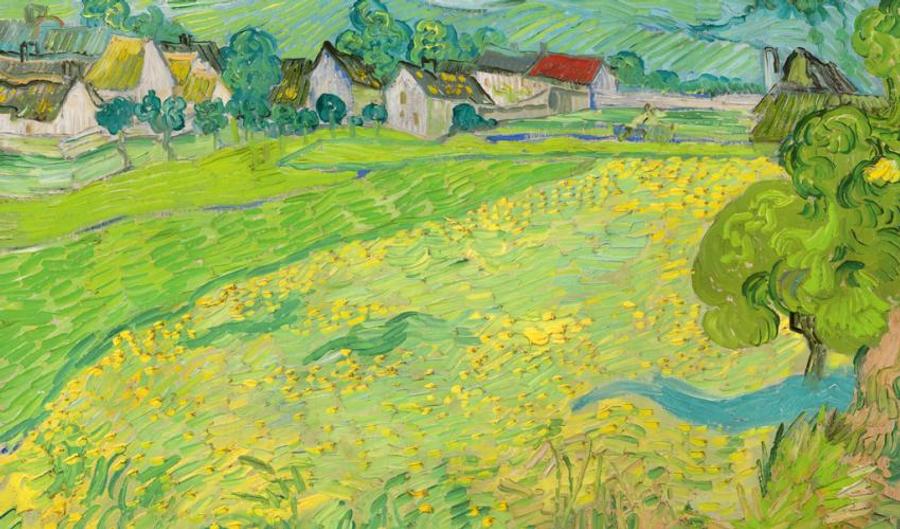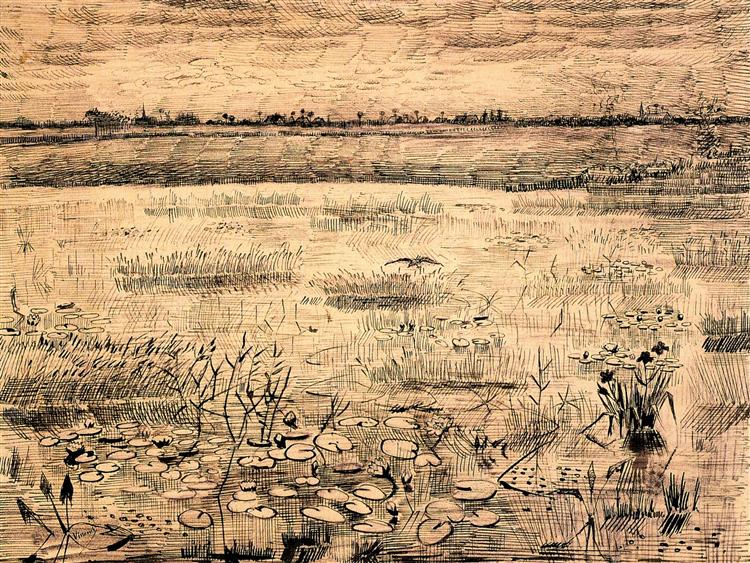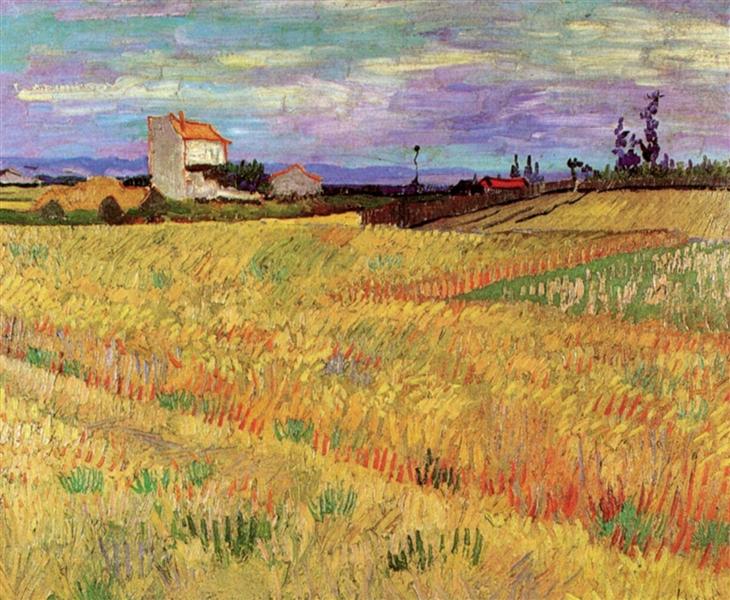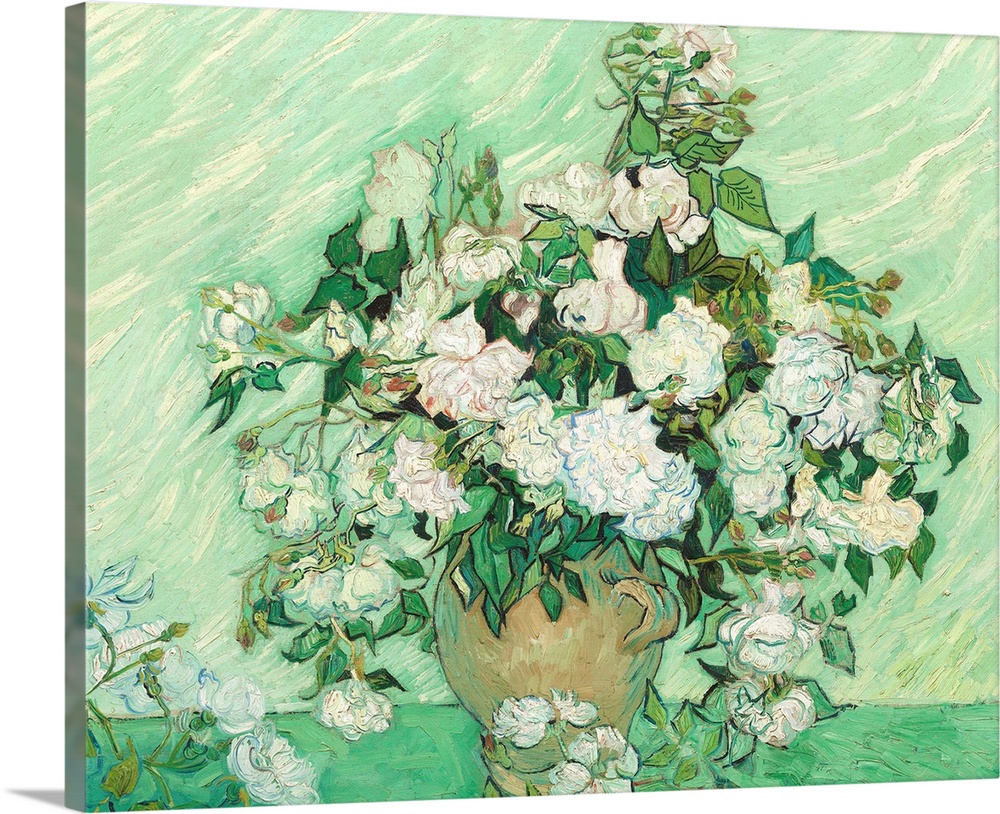Santa Barbara Museum of Art
Feb. 27 through May 22, 2022

Santa Barbara, a seaside city known for its café culture, sweeping views and vibrant arts scene, is set to draw visitors this spring for a full van Gogh experience.
Organized by the Santa Barbara Museum of Art (SBMA) and in partnership with the Columbus Museum of Art, Through Vincent’s Eyes: Van Gogh and His Sources seeks to immerse viewers in the visual imagination of one of the most idolized artists in the world. By floating 20 works of art by Dutch painter Vincent Van Gogh in a sea of over 75 works of art by those who influenced him, the exhibition provides an unprecedented opportunity for visitors to dive deeply into the rich, visual culture of Van Gogh’s late 19th-century world. Celebrated works of art by Van Gogh will be juxtaposed with works by the many artists he admired, thereby dramatizing both the artist’s indebtedness to and radical departure from the art world of his day. After debuting in Columbus, Ohio, Through Vincent’s Eyes runs in Santa Barbara, Calif., from Feb. 27 through May 22, 2022. Curated by Santa Barbara Museum of Art Deputy Director and Chief Curator, Eik Kahng, this will be the first international loan exhibition to be presented following SBMA’s $50 million renovation of the original 1912 building and connected exhibition spaces.

To celebrate this groundbreaking exhibition, the Santa Barbara community is offering “Van Gogh in Santa Barbara” related programs, exhibitions, and initiatives around the city during the run of the show. A plethora of performances, activities, and visuals occurring throughout the city, with the participation of 17 partner organizations, take cues from themes in the SBMA exhibition.
Through Vincent’s Eyes presents iconic works by Van Gogh from all periods of his brief ten-year career, including early attempts, such as
Marsh with Water Lilies, Etten (1881), a remarkable drawing that already shows Vincent’s insistent originality with its high horizon line and staccato mark making, and the lithographic version of The Potato Eaters (1885), clearly inspired by his early exposure to the sympathetic depictions of the working class that he so admired in the illustrations to the British periodical, The Graphic. The smoldering intensity of Self-Portrait with Pipe (1886), lent by the Van Gogh Museum in Amsterdam, from the Paris period, foreshadows the manic creativity of the last three years, despite the relative sobriety of his self-presentation as an urbanite in well-fitted suit and tie, while the luminous landscapes of the crowning two years of his tragically short career, such as
Wheat Field (1888), instance his fully mature and now unmistakable signature style.
Roses from the National Gallery of Art and dated to the spring of 1890, just a few brief months before his death, crowns the installation, with its gorgeous palette of pink, green, and white.

This exhibition provides a crucial corrective to the frequent misperception of Van Gogh as a kind of savant, a genius whose idiosyncratic approach to painting sprang largely from his tortured psyche. As visitors will learn, Van Gogh had a sophisticated knowledge of a wide variety of art, including minor masters such as the French specialists of peasants, Jules Breton (1827–1906) and Jean-François Millet (1814–1875), the idiosyncratic Adolphe Monticelli (1824–1886), whose thick paint application Van Gogh adapted in his own practice, as well as his Hague School cousin, Anton Mauve (1838–1888), and of course, Japanese woodblock prints, which Van Gogh collected like his Impressionist peers. The selection also highlights Van Gogh’s more familiar love of the Barbizon school, including works by Jean-Baptiste-Camille Corot (1796–1875), Léon Lhermitte (1844–1925), and Georges Michel (1763–1843); his allegiance to the colorism of Eugène Delacroix (1798–1863); and the epiphany he had when he finally recognized the connection between the French Romantic master and the art of the Impressionists and Post-Impressionists, represented by major artworks by Émile Bernard (1868–1941), Edgar Degas (1834–1917), Paul Gauguin (1848–1903), Henri de Toulouse-Lautrec (1864–1901), Claude Monet (1940–1926), Camille Pissarro (1830–1903), and Paul Sérusier (1864–1927).
The exhibition is also the first to include 17 first-edition novels revered by Van Gogh, including those by Charles Dickens, George Eliot, Victor Hugo, and Harriet Beecher Stowe—reminding viewers of the fictional worlds that enflamed Vincent’s inner eye. The presence of these novels in the installation creates an easy bridge between such social realist authors and their visual counterparts, like Jean-François Raffaëlli (1850-1924), who also specialized in the representation of the marginalized and the downtrodden—very much like Van Gogh, who recognized in Raffaëlli’s social “types,” a kindred spirit.
Ambitiously, Through Vincent’s Eyes convenes important works of art from 40 national and international, public and private lenders, including prestigious institutions such as the Carnegie Museum of Art, Pittsburgh; Columbus Museum of Art; Dallas Museum of Art; Fine Arts Museums of San Francisco; Hammer Museum, Los Angeles; Honolulu Museum of Art; Kröller-Müller Museum, Otterlo; Los Angeles County Museum of Art; Metropolitan Museum of Art, New York; Museo Nacional Thyssen-Bornesmisza, Madrid; Phillips Collection, Washington, DC; Santa Barbara Museum of Art; and Van Gogh Museum, Amsterdam.

Serving art lovers of every age, community partners across the Santa Barbara will immerse visitors in the visual imagination of one of the most idolized artists in the world, through public art, music, dance, and theater performances, other museum and gallery installations, a virtual reality experience, and participative art classes. (Learn more here.)
Community partner institutions will include the Santa Barbara Symphony, Opera Santa Barbara, Ensemble Theatre Company, Santa Barbara Museum of Natural History, MOXI (The Wolf Museum of Exploration + Innovation), Lotusland, Museum of Contemporary Art Santa Barbara, Belmond El Encanto, La Cumbre Center for Creative Arts, 10 West Gallery, The Crafter’s Library, Sullivan Goss – An American Gallery, and many more.


